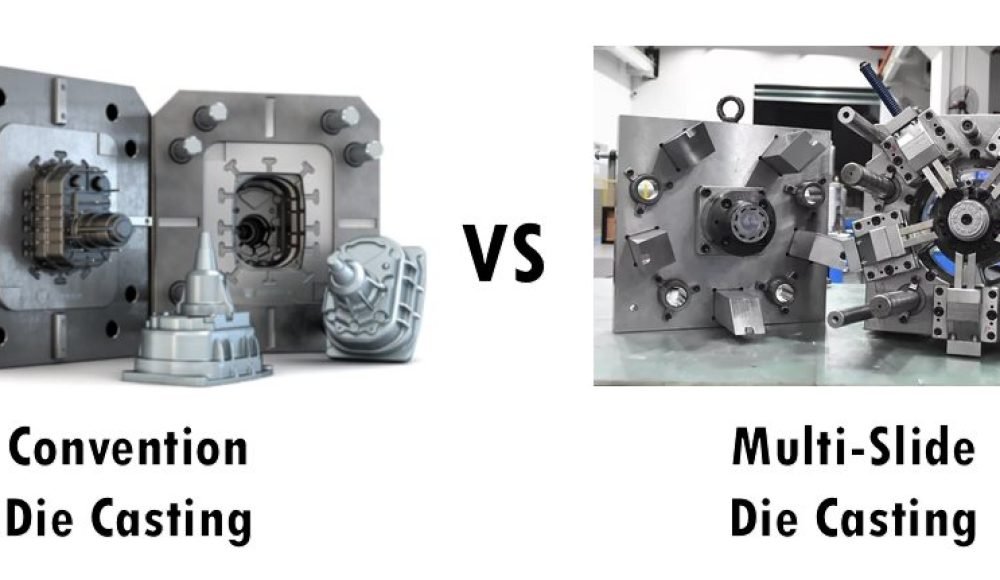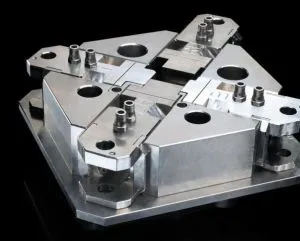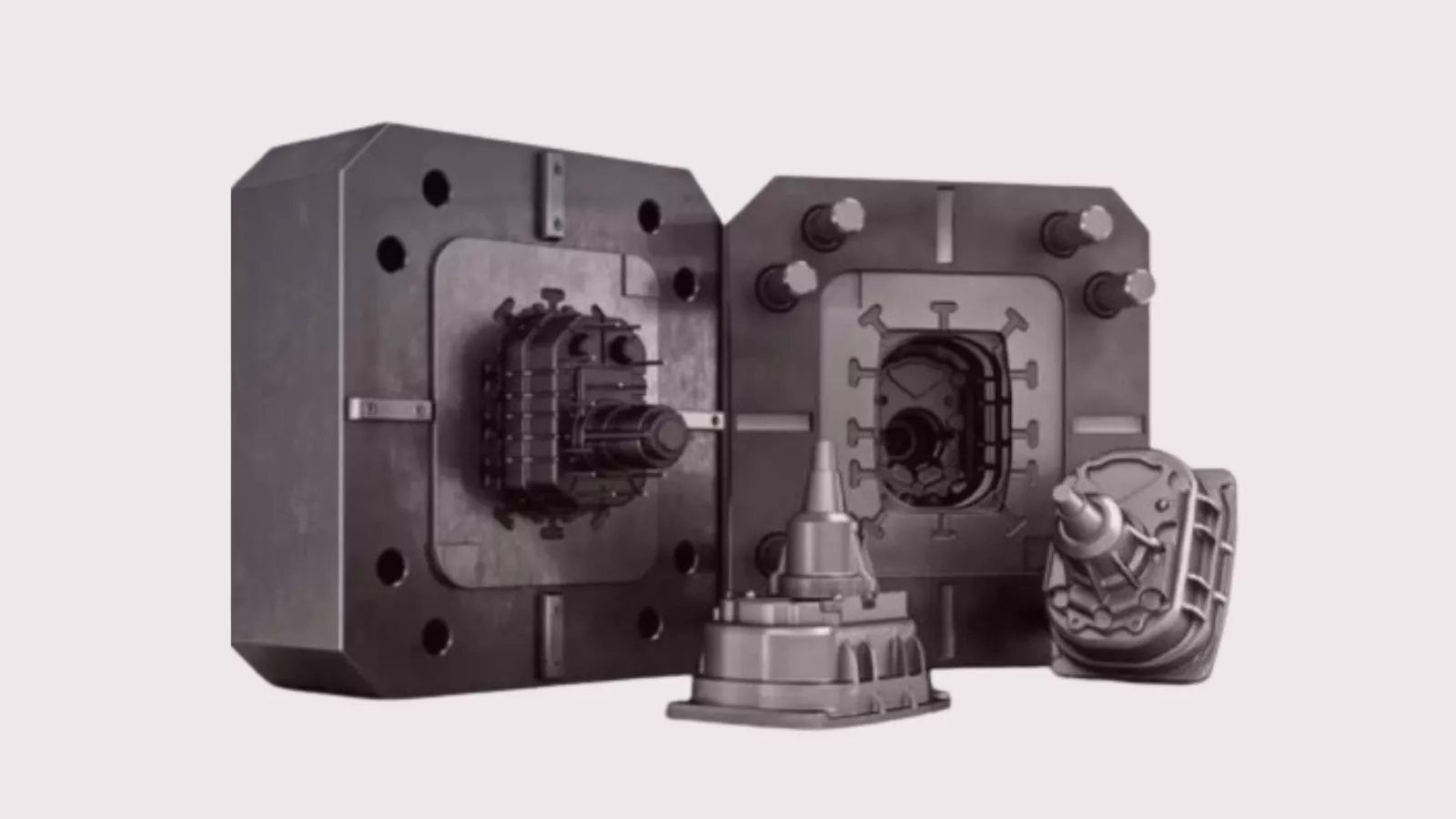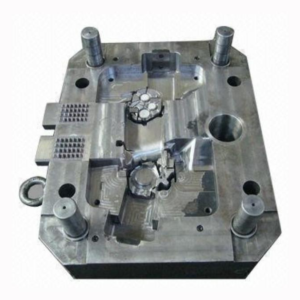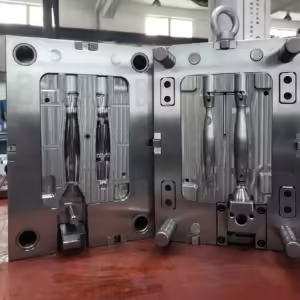Nella moderna lavorazione dei metalli e di precisione, pressofusione è uno dei processi più utilizzati per la produzione di complessi, parti metalliche ad alto volume con eccellente precisione dimensionale. Tra i vari metodi di pressofusione, pressofusione multi-slitta E pressofusione convenzionale si distinguono come due tecniche distinte, ognuno con i propri vantaggi e applicazioni ideali. Questo articolo esplora questi due processi in dettaglio, spiegando come funzionano, confrontando i propri punti di forza e i propri limiti, e offrendo indicazioni sulla scelta del metodo giusto per il tuo progetto.
Pressofusione multi-slitta: Precisione per parti complesse
Pressofusione multislitta è una forma avanzata di pressofusione ad alta pressione che utilizza quattro o più slitte, sezioni mobili dello stampo che si uniscono perpendicolarmente per formare la cavità. Ciò consente la creazione di parti estremamente dettagliate e complesse con tolleranze strette e finiture superficiali eccellenti.
Caratteristiche chiave:
Usi quattro o più diapositive perpendicolari.
Abilita complessità degli utensili e accesso da più angolazioni.
Progettato per produzione ad alto volume di piccolo, parti complesse.
Applicazioni:
- Connettori elettrici
- Sensori automobilistici
- Componenti di dispositivi medici
- Guarda le parti
- Meccanismi di blocco
Vantaggi:
Alta precisione e ripetibilità: In grado di mantenere tolleranze strette fino a ±0,01 mm.
Tempi di ciclo più rapidi: Il movimento simultaneo della slitta riduce i tempi di produzione.
Finitura superficiale superiore: Riduce o elimina la necessità di lavorazioni secondarie.
Parti a parete sottile: Ideale per leggerezza, design compatti.
Pressofusione convenzionale: Lo standard per componenti di grandi dimensioni
Pressofusione convenzionale, spesso indicato come pressofusione ad alta pressione (HPDC), è un processo di produzione consolidato che utilizza un sistema di stampi in due parti. Questi stampi, costituiti da una metà fissa e da una metà mobile, formano una cavità nella quale viene iniettato il metallo fuso ad alta pressione.
Caratteristiche chiave:
Usi utensileria in due parti (stampi fissi e mobili).
Adatto per la produzione parti più grandi con moderata complessità.
Compatibile con un'ampia gamma di leghe (alluminio, magnesio, zinco, ecc.).
Applicazioni:
- Blocchi motore e testate
- Alloggiamenti del cambio
- Corpi di pompa
- Cornici per elettrodomestici
- Contenitori per illuminazione
Vantaggi:
Efficiente per grandi fusioni: Può gestire geometrie più voluminose e pareti più spesse.
Costi di attrezzaggio inferiori rispetto al multi-slitta per forme più semplici.
Produzione ad alta velocità per pezzi medio-grandi.
Pressofusione multi-slitta vs pressofusione convenzionale: Un confronto fianco a fianco
| Caratteristica | Pressofusione multi-slitta | Pressofusione convenzionale |
| Configurazione dello stampo | Quattro o più diapositive | Sistema di stampi in due parti |
| Dimensione parte | Parti da piccole a medie | Pezzi medio-grandi |
| Livello di dettaglio | Funzionalità estremamente complesse | Dettaglio moderato |
| Tolleranza | ±0,01 mm o migliore | ±0,05 mm tipico |
| Tempo del ciclo | Più breve grazie all'espulsione multi-diapositiva | Più lungo grazie al funzionamento a due slitte |
| Costo | Maggiore a causa della complessità degli utensili | Più basso per le parti più semplici |
| Volume di produzione | Ideale per piccole parti ad alto volume | Adatto per pezzi di grandi dimensioni con volumi elevati |
| Vita degli strumenti | Lungo, a seconda della complessità della parte | Lungo, ma varia con la lega e il carico termico |
| Finitura superficiale | Eccellente, Necessario post-elaborazione minimo | Bene, potrebbe richiedere lavorazione o lucidatura |
Scegliere il giusto metodo di pressofusione
Quando si sceglie tra pressofusione multi-slitta e convenzionale, considerare il misurare, complessità, e requisiti di precisione delle tue parti:
Scegliere pressofusione multi-slitta Se:
Le tue parti sono piccole e complesse.
Hai bisogno di tolleranze strette e dettagli precisi.
La finitura superficiale è fondamentale, e le operazioni secondarie dovrebbero essere ridotte al minimo.
Velocità e automazione sono priorità nella produzione di massa.
Scegliere pressofusione convenzionale Se:
I tuoi componenti sono più grandi e meno complessi.
Stai lavorando con leghe di alluminio o magnesio.
I vincoli di budget favoriscono strumenti più semplici.
Il tuo progetto richiede parti robuste piuttosto che funzionalità dettagliate.
Collabora con Tops Precision per soluzioni esperte di pressofusione
A Tops Precision, siamo specializzati in entrambi pressofusione multislitta e convenzionale tecnologie per soddisfare le diverse esigenze dei nostri clienti nel settore automobilistico, elettronica, medico, e settori dei beni di consumo. I nostri ingegneri sono pronti ad aiutarvi a valutare il progetto del vostro pezzo e a consigliarvi la soluzione più economica e con prestazioni ottimizzate.
Che tu stia producendo sensori miniaturizzati o custodie per carichi pesanti, TOPS consegna precisione, qualità, E efficienza ogni passo del cammino.
📞 Contattaci oggi per saperne di più sulle nostre capacità di pressofusione o richiedere un preventivo personalizzato per il tuo prossimo progetto.
Domande frequenti
1: Qual è la differenza principale tra la pressofusione multi-slitta e quella convenzionale??
La differenza principale sta nel progettazione e attrezzature degli stampi. Usi di pressofusione multi-slitta quattro o più strumenti scorrevoli che si muovono perpendicolarmente fino a formare cavità complesse, consentendo parti più dettagliate. La pressofusione convenzionale utilizza a stampo in due parti, rendendolo più adatto più grande, componenti meno complessi.
2: Quale metodo di pressofusione è migliore per le piccole parti di alta precisione?
Pressofusione multislitta è il metodo preferito per piccole parti ad alta precisione. Fornisce tolleranze strette, finiture superficiali superiori, E tempi di ciclo più brevi, rendendolo ideale per componenti come connettori elettrici, sensori, e piccoli assemblaggi meccanici.
3: La pressofusione multi-slitta è più costosa della pressofusione convenzionale?
SÌ, IL costo iniziale dell'attrezzatura per la pressofusione multi-slitta è tipicamente più alto a causa della complessità dei meccanismi dello stampo e della slitta. Tuttavia, spesso fornisce risparmio sui costi nella produzione di grandi volumi a causa dei tempi di ciclo più rapidi e della ridotta necessità di operazioni secondarie.
4: È possibile utilizzare la pressofusione convenzionale per pezzi di piccole dimensioni?
Mentre la pressofusione convenzionale può essere utilizzato per piccole parti, è meno efficiente e potrebbe non raggiungere lo stesso livello di dettaglio o tolleranza della fusione multi-slitta. Per ottenere i migliori risultati nella produzione di piccole parti, la pressofusione multi-slitta è generalmente più adatta.
5: Come faccio a scegliere tra i due metodi per il mio progetto?
La tua scelta dovrebbe essere basata su fattori come Dimensione parte, complessità geometrica, requisiti di tolleranza, E bilancio.
Per piccolo, intricato, e parti di alta precisione, scegliere pressofusione multi-slitta.
Per più grande, parti più semplici, soprattutto quando il costo è una preoccupazione, pressofusione convenzionale è spesso l'opzione migliore.

